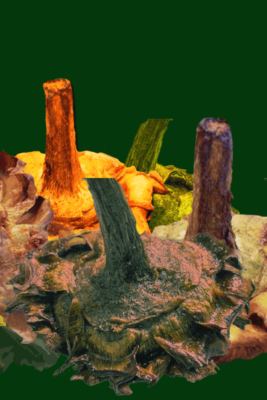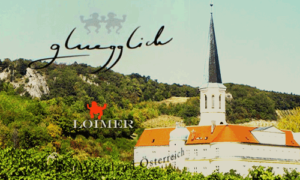When Rome gives you Carciofi alla Giudea, eat the Jewish-style artichokes with gusto
Romelicious
Carciofi Alla Giudea, a century-old fried Jewish delicacy from the eternal city of Rome boasts centuries and centuries of history. Since ancient times, the Jewish women prepared this dish on the occasion of the feast of Kippur, the feast of atonement.

When spring arrives, around Easter or before, many Romans take a walk from Piazza Venezia or Trastevere to celebrate the beginning of the artichoke season. It is also the time when demand for the Jewish style artichokes explodes in the heart of the former Jewish Ghetto. Carciofi Alla Giudia is a popular dish in Rome, and also happens to be one of our favourites.

Carciofi alla giudea or carciofi alla giudia
For me, to eat the Jewish style deep-fried artichokes becomes a matter of some urgency during a spring visit to Rome. Not only are they delicious, but they also represent a splendid tribute to the local Jewish food tradition that boasts centuries of history.
Some history
The Jewish community in Rome is the oldest known in Europe. Already in the year 161 BC, Judas Maccabaeus send emissaries to the Roman Empire. The community expands significantly after 70 AD when the destruction of the Second Temple in Jerusalem by Emperor Titus’ troops in 70 AD created a flow of refugees and slaves. *Tip
Forced to live in Trastevere from the 10th century, Pope Paul IV ordered the construction of ‘Il Ghetto di Roma’ in 1555 on the other side of the river Tiber, in Rioni. Not just severely restricted by the cramped living quarters in dark, crumbling dwellings, Pope Paul IV also revoked all earlier rights granted to the Roman Jews.

Restricted, yet deliciously creative
And yet, it was in this restricted setting that the Roman Jewish cuisine flourished. In these circumstances, frying was the most sensible thing to do. You need a frying pan, a fire, and olive oil, lot’s of it. In poorly lit, ill-equipped kitchens the Roman Jews turned to humble ingredients and made them into appetizing dishes.
Vegetable fries or ‘fritto misto’
For the Roman Jewish ‘fritto misto’ -simple, fried, vegetable dishes- a wonderful chickpea batter (a local told me) was used to make them light, airy, and crispy. Fries were not only a means to eat kosher, non-cooked dishes on the Sabbath, selling ‘fritto misto’ or running a ‘friggitoria’ are one of the few means open to Roman Jews to earn some money.
The iconic ‘Alla Giudea’
Of all the dishes you can eat in the Roman Jewish quarter, the artichoke received an iconic status. In ancient times, the Jewish women prepared this dish on the occasion of the feast of Kippur, the feast of atonement. Carciofi Alla Giudea – artichokes in the Jewish way is actually quite a simple dish if you use the right type of artichoke.

‘Mammola’, and ‘Cimarolo’ artichoke
It is precisely for this reason that the ‘Mammola’, and ‘Cimarolo’ variety of artichoke is used. Roman artichokes are now PGI (Protected Geographical Indication) grown and protected.
Both cultivars do not have the classic thorns, thorns that must be removed in many other varieties. They are round and entirely edible. The softness of the leaves makes them perfect for frying as a whole. Some people prefer to use the smaller artichokes, located lower on the stalks, called ‘Figlioli’ – children- or even the tiny ones called ‘Nipoti’, grandchildren in English.
Preparing the artichokes
The artichokes are trimmed with a knife to eliminate the outer leaves and the reddish tips. Some people then placed them in a bowl with water and lemon for 10 minutes. Take them out of the water, dry them, and season with salt and pepper. Two methods are used.
How to prepare carciofi alla giudia
Beat two artichokes against each other. Then gently tap each artichoke on the work surface. This is necessary to remove the water and to facilitate the opening of the flower during cooking. Or bang the blossom of the artichoke down to loosen the tender leaves and coax the leaves to open slightly. The artichokes are then fried once in olive oil and left to rest.
Others think that to be truly Alla Giudia, the artichokes should be fried in oil (about 8-10 minutes). The oil should reach a temperature of about 130-150 °C, warm, but not boiling. Once cooled, the leaves should be coaxed gently to open outwards with a fork. Seasoned them inside with a little salt and pepper.
Serve hot eat whole
After at least 10-15 minutes out of the oil, the artichokes are fried for a second time. Place the artichokes -again- in hot oil around 180 °C. The artichokes must be fried at a higher temperature than that the first fry. Fry them for a few minutes, don’t burn them. Remove from the oil and drain the artichokes on absorbent paper. Serve hot. Eat them whole.
Carciofi & wine
Think about a white wine such as a Vermentino di Gallura from Sardinia, a Traminer from the Alsace in France, a dry Muscat from Austria, or a dry Frascati Superiore. A red is a less good match because of the clash of tannins present in the wine, with tannins found in artichokes
*Tip -Go and see the Arch of Titus, located on the Via Sacra, Rome. Titus’ arch depicts Romans carrying the spoils taken from the Temple in Jerusalem, including a Menorah, sacred trumpets and a showbread table


